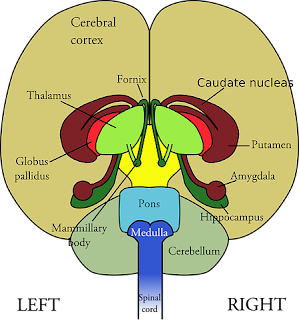RABIES: WHY FEAR OF WATER?
Ever wondered why rabies causes the well-known fear of water? Read till the end if you want to find out!
(Or you could directly skip to the last paragraph but you'll end up missing a few good facts :P)
Rabies is brought about by lyssaviruses. It is spread when an infected animal bites or scratches humans or other animals. Salivation from a tainted creature can likewise transmit rabies if the saliva comes into contact with the eyes, mouth, nose, or even if a contaminated animal were to lick an open cut on your skin.
Dogs are the most well-known creatures associated with rabies. Rodents are once in a while contaminated with rabies. The disease can be detected only after the beginning of the symptoms.
Rabies has been known to humans since 2000 B.C. Despite the knowledge of this disease, around 59,000 people die due to rabies in a year. The virus that causes Rabies is present around the world (with the exception of Antarctica) and all mammals are susceptible to infection.
When an individual starts showing symptoms and effects of rabies, the illness most certainly causes demise. Consequently, any individual who may have a danger of contracting rabies ought to get a rabies vaccination immediately for protection. Prevention is better than cure, right?
The period between infection and the main symptoms is normally 1–3 months in people. This period might be as short as four days, depending upon the area and seriousness of the injury and the amount of virus infected in the body. In the beginning, the side effects of rabies are regularly vague, for example, fever and headache.
As rabies advances, it causes aggravation of the cerebrum and meninges, side effects can incorporate partial paralysis, nervousness, sleeping disorder, disarray/confusion, disturbance, anomalous conduct, paranoia, fear, and hallucinations. The individual may likewise have a fear of water.
The manifestations in the end progress to insanity, and trance-like state. Demise usually happens 2 to 10 days after the first side effects.
How does the virus infect?
Like each different infection, rabies utilizes different cells as factories. The virus attacks cells and utilizes the cell hardware to recreate. The new viruses break free, tearing the cell open and spreading outwards, tainting more cells. At this point, the infection has figured out how to arrive at the spinal cord and the cerebrum, so, all things considered, it starts to unleash havoc on the brain.
The cerebrum gets inflamed and the virus infects synapses, modifying the manner in which they work. This influences different brain regions, causing the trademark aggression and rage related to rabies. Researchers claim that the rabies infection seizes certain serotonergic pathways that influence animosity or animal-like behavior, however, the subtleties of this are unclear. The infection additionally influences certain synapse receptors called nicotinoid receptors in the mind and muscles, which prompts muscle loss of motion.
"Why the fear of water?"
Regardless of being associated with hydrophobia, rabies doesn't really cause a genuine dread of water. The hydrophobia is welcomed by the extraordinary agony that the infected person faced on gulping any fluids. In this manner, rabies doesn't make an unreasonable fear of water, as it is normal to fear something you realize will cause you torment/ extreme pain.
From the perspective of the virus, swallowing is unreasonable since the virus will get flushed down to the gut. The infection rich saliva can't contaminate another host if the virus is inside the host's gut. Keeping the mouth overflowed with saliva gives the virus the best hostile odds of being passed along. Combined with forceful and hyperactive symptoms, the infection will before long end up in another host thus, facilitating its spread and further growth.
I'm eternally grateful to everyone who follows me regularly. You make me want to write more. Keep supporting me! Do let me know about improvements to help make this space better. All suggestions are welcome. <3
I hope you found your daily dose of knowledge through this blog! Do you have any other topics/diseases/ in mind that you would want me to write about? Let me know in the comment section. :)
Click on that FOLLOW button (to the panel on your right) and put in your mail ID to get a notification every time I publish a new blog!
CHECK OUT OTHER BLOGS FROM THIS AUTHOR. THANKYOU!!!
HOW DID THE WORD OK COME INTO EXISTENCE?
WHY DO HYENAS LAUGH?
HOW DID NEW ZEALAND GO CORONA FREE?
WHY IS THE DEAD SEA SO SALTY?
BUTTERFLY EFFECT
CHECK OUT BLOGS FROM URBANTRENSY









This is a complete new fact for me.. Thank you.. And keep posting 🥂
ReplyDeleteI'm glad you found it useful! <3
DeleteSuperb effort
ReplyDeleteThankyou so much!! Means a lot <3
Delete1) 55000 approximate deaths per year
ReplyDelete2) Yes the disease does cause animal like behavior and as quoted in the blog " Researchers claim that the rabies infection seizes certain serotonergic pathways that influence animosity or animal-like behavior, however, the subtleties of this are unclear."
The virus damages synapses present in the brain which leads to deteriorating mental health.